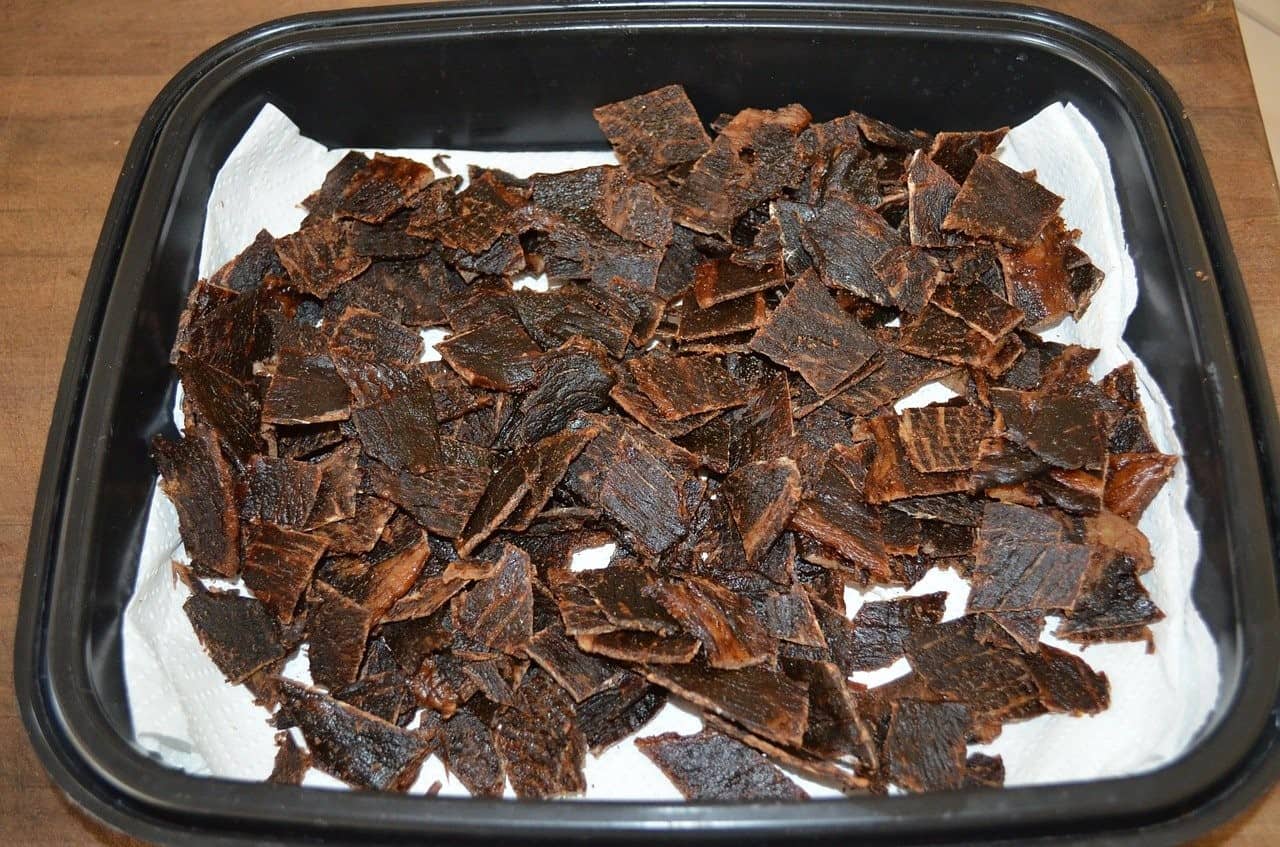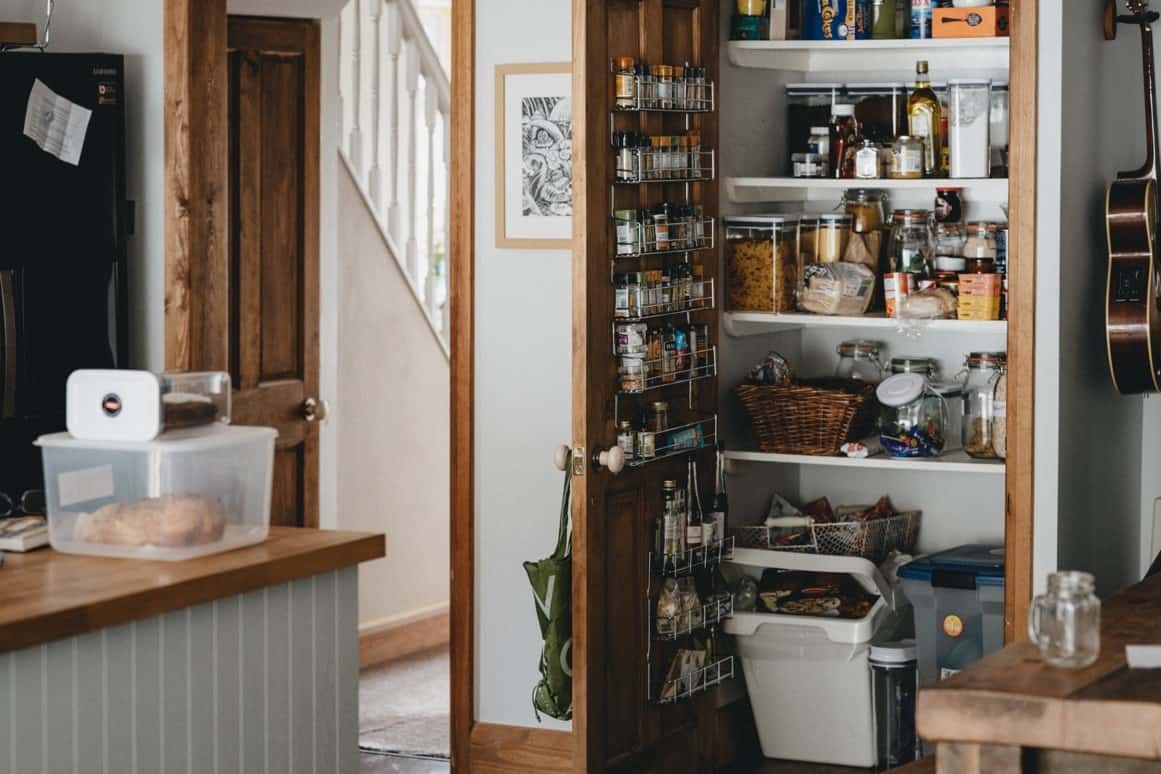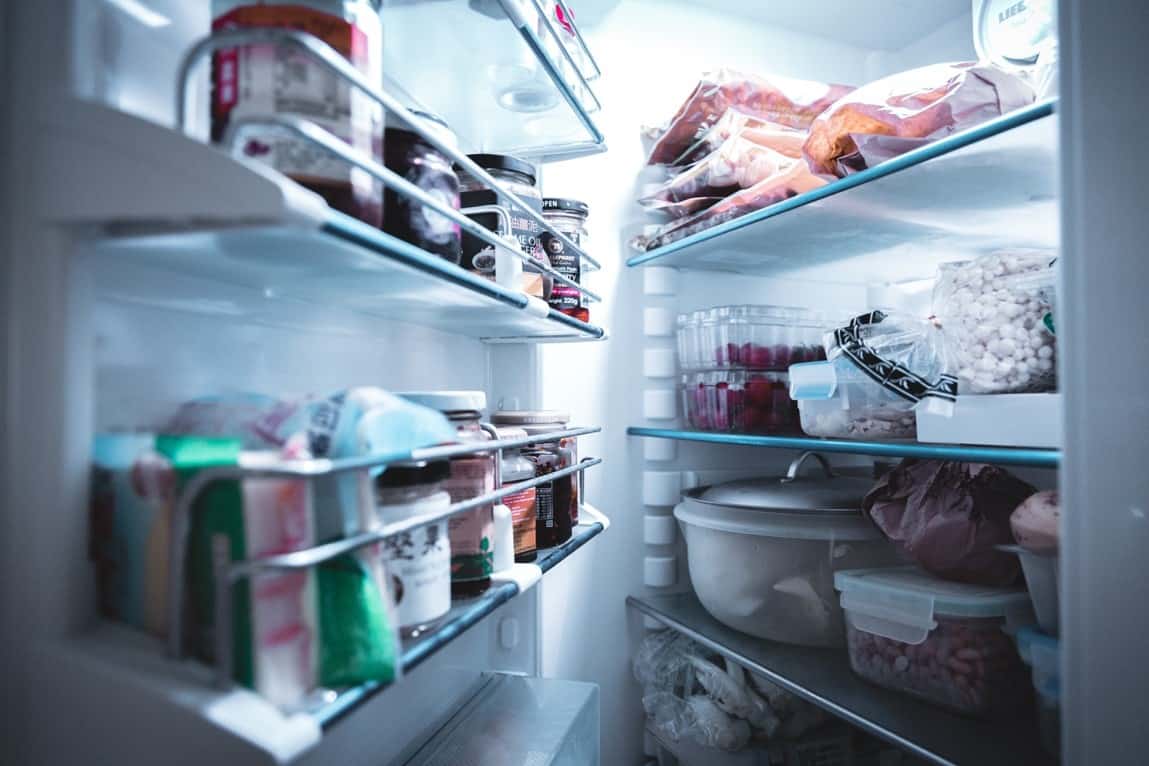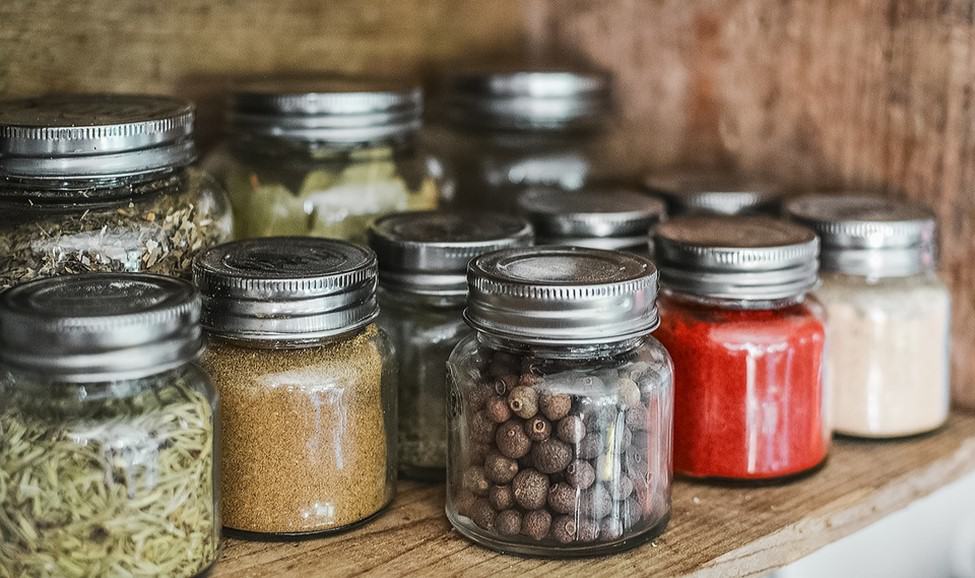Dehydrating is one of the simplest and most common ways food can be stored long-term. For backpackers and preppers, dehydrating is efficient as it retains a lot of the nutrients in the food. Meat shrinks as a result of dehydration, making it compact and easier to store.
How long does dehydrated meat last? Dehydrated meat can last for 1-2 months when stored properly. There are also certain techniques such as vacuum sealing that may prolong dehydrated meat’s shelf-life up to a year. Furthermore, storing dehydrated meat in the freezer can make it last indefinitely. However, it’s best to consume it between the first and third month before its flavor begins to diminish.
The shelf-life of dehydrated meat can greatly vary depending on the way you store it. This is because the environment wherein you store the dehydrated meat can influence the rate of bacterial growth.
How Dehydration Helps Preserve Meat

By definition, dehydrating any foodstuff means getting rid of its water content. Dehydrated meat lacks the moisture necessary for bacteria to reproduce.
With that said, it is important to understand the conditions needed for bacterial growth in order to plan how you will store your food. Food safety experts have devised the mnemonic “FATTOM” to make them easier to remember.
- Food – any food with a higher protein content is more susceptible to bacterial growth, including food sourced from animals such as meat.
- Acid – acidic environments are not suitable for microbial growth. This makes organic acids such as citric, malic, and lactic, good preservatives. Bacterial growth is also slow in alkaline foods.
- Temperature – the 40°F-140°F (4°C-60°C) range is said to be the “danger zone,” as bacterial growth is exacerbated when food is stored in areas with these temperatures.
- Time – reproduction of bacteria needs time. Once it begins and is left unchecked, the process can get really fast.
- Oxygen – the presence of oxygen can stimulate the growth of bacteria. In contrast, other strains of bacteria can also thrive in oxygen-free environments.
- Moisture – the water content of foodstuffs is a breeding ground for bacterial growth. This makes dehydration a particularly effective way of preserving meat.
Preservation methods are designed to address any of these combinations. Dehydration is a process with several variations that can produce different results.
How Long Does Dehydrated Meat Last
| Technique | Duration | Shelf-life |
| Sun-drying | 12-16 hours (may even take up to several days depending on weather conditions) | Up to 2 months without a freezer
Indefinitely when stored in a freezer |
| Curing | At least 1 week | |
| Smoking | 1-24 hours (hot smoking); 12 hours-7 days (cold smoking) | |
| Dehydrator | 6-12 hours |
Dehydration has been used to preserve food for centuries because of its inherent simplicity. Furthermore, it addresses two of the conditions mentioned above: temperature and moisture.
How long you have to dry the meat depends on which technique you are following. Likewise, varied outcomes will be achieved when dehydration is done in combination with other techniques.
Before proceeding with any of the methods, make sure to take off as much fat from the meat as possible, as there is a chance that it will go rancid.
Throughout the process, make sure to sanitize your hands and everything in your workplace. Using unsanitized tools and workspaces may cross-contaminate the meat with harmful bacteria.
Storage Tips
The shelf-life of dehydrated meat will vary depending on the way it is stored. Every strategy to prolong shelf-life revolves around managing the aforementioned conditions contributing to bacterial growth.
Store in a Dry, Dark, and Cool Area

Before proceeding with sealing the dehydrated meat, make sure that it has completely cooled. Let it rest overnight before moving on to the next step. Packing it while it is still warm may result in droplets of water in the container due to condensation.
The ideal storage temperature is at most 60°F (15°C), the lower the temperature, the better. Similar to the reason above, storing it in high temperatures may cause condensation in the container. This will stimulate bacterial growth.
If a cool temperature is not feasible, the next best option is to store your dehydrated meat in a place where the temperature is constant. An example would be at the back of a cupboard which is consistently in room temperature.
Cupboards have the additional benefit of darkness. Exposure to light assists in fat oxidation, which can degrade its flavor. Additionally, it may cause a loss of nutrients. Make sure that the cupboard is far from your stove, or anything that generates heat, to prevent moisture through condensation.
Store in Air-tight Containers
Jars are also efficient air-tight containers. Once the content is inside, you can use a jar sealer to make sure that the lid is secure. Moreover, you can also purchase a pressure canner. This uses pressurized steam to penetrate the jar with high levels of heat, effectively sealing it.
In the absence of vacuum sealers, you may opt to use specialized freezer bags or butcher’s paper in the meantime. Make sure to wrap it as tightly as possible then seal it with some masking tape or scotch tape.
Ultimately, the goal is to deprive the meat of oxygen from the inside. When done incorrectly, anaerobic bacteria may find a way to grow in the improperly sealed vacuum.
You may also consider storing dehydrated meat in smaller batches. Reopening and closing the container may introduce oxygen, thus promoting bacterial growth. If possible, pack your food per serving to avoid reintroducing oxygen and consistently resealing the container.
Double Bagging
Due to the nature of its material, it cannot be vacuum-sealed easily. Instead, it must be heat-sealed. Some vacuum sealers carry this feature, which works by sealing the bag with heat instead of suction.
In the absence of this feature, you may use an iron and metal edge to heat seal the Mylar bag.
Oxygen Absorbers
Oxygen absorbers replace the oxygen in a sealed container with a nitrogen environment. This helps in the long-term preservation of dried foods, all while retaining its quality.
It is important to make sure that the meat is completely dehydrated before using oxygen absorbers. A moisture content of at least 10 percent runs you the risk of botulism poisoning.
Store in Freezer for Longer Shelf-life

Storing dehydrated food in the freezer dramatically extends its shelf-life. Although it is said that a food’s shelf-life is indefinite so long as it is in the freezer, the quality will deteriorate over time.
To optimize your freezer usage, keep the temperature below 0°F (-18°C). As it is way below the danger zone mentioned above, the environment in freezers is unconducive to bacterial growth.
In the case of a power outage, keep the doors of your fridge and freezer closed at all times to keep the interior temperature cold. A freezer can keep its temperature for around 48 hours provided that the door stays closed. In the event that the power outage will extend longer than 2 days, procure some dry ice or block ice to maintain the temperature.
Re-dehydration
There may be instances wherein the meat would not be dehydrated evenly. When sealed in a jar, the drier pieces of meat may absorb the moisture from the other pieces.
Check the containers storing dried food every few days. After 10 days, if you notice any moisture in the content, you may remedy this by re-dehydrating the meat.
Another option is to put it in the freezer instead. Lastly, you may opt to just eat it before it completely spoils.
Final Thoughts
Storing the meat in a dry, dark, and cool environment will allow you to preserve dehydrated meat for up to 2 months. Additionally, eliminating moisture and oxygen can greatly improve the shelf-life of dehydrated meat. Sealing it in air-tight containers may extend its shelf-life to around a year. Lastly, keeping the dehydrated meat in a freezer can preserve it for an indefinite period of time.

